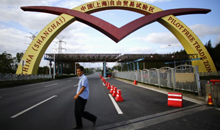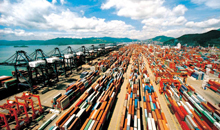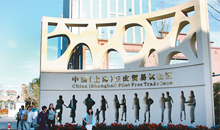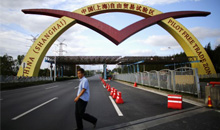FTZ model 'will expand nationwide'
The business model behind the pioneering China (Shanghai) Pilot Free Trade Zone should now be copied at other suitable sites across the country where conditions are right, according to President Xi Jinping.

President Xi says that Shanghai pilot zone reforms can bear fruit elsewhere
The business model behind the pioneering China (Shanghai) Pilot Free Trade Zone should now be copied at other suitable sites across the country where conditions are right, according to President Xi Jinping.
Addressing a meeting of top decision-makers, the president said the experience gained in the Shanghai FTZ "are like seeds cultivated in a test field, and now we will plant them across a greater range of sites, in a hope that they will bear more fruit".
Xi acknowledged the progress made in the Shanghai FTZ, praising the efforts in transforming government functions, facilitating investment and trade, and improving the business environment.
Some 12,000 firms have been established in the Shanghai FTZ since its launch in late September last year. Foreign trade in the zone reached 747.5 billion yuan ($122.25 billion) in its first year of operation, according to Xinhua.
The 29 sq km zone in the Chinese financial hub has promised free trade, greater financial opening and fewer government controls over business activities.
Coastal provinces and regions, including Guangdong, Fujian, and Tianjin are among the most likely sites to host the next FTZs, and their applications are likely to be approved before the end of this year, Reuters reported, citing two unnamed sources with local governments.
The negative list system, an innovative approach introduced in Shanghai to provide easier market access for foreign companies, could be improved in a Tianjin FTZ, Xinhua's Economic Information Daily reported.
The FTZ expansion plans sparked rises in the share prices of likely new sites, with Tianjin Harbor and Tianjin Marine Shipping Corp increasing by more than 7 percent in Shanghai trading on Tuesday.
Prior to news on the zones, the State Council approved the expansion of Tianjin Harbor, with an added 1,120 square kilometers of new water area, and more than 70 new berths.
Bai Ming, a researcher at the Ministry of Commerce, said the expansion plans laid a solid foundation for Tianjin to explore opportunities for an FTZ.
"With the integration of Beijing, Tianjin and Hebei province, more and more resources will be mobilized to give more chances to a Tianjin FTZ," said Bai.
More than 20 provinces and cities prioritized the development of an FTZ in their government work reports this year, and experts suggested the second batch of FTZs could have distinctive differences to the first in Shanghai.
Zhou Hanmin, a senior political adviser to the Shanghai municipal government, said at a recent forum that FTZs in other provinces will have their own particular focuses compared with Shanghai, aimed at pushing forward their own specific economic reforms and policies.
"Guangdong will focus on Hong Kong, China and Macao, and Fujian will focus on Taiwan, China, while Tianjin will mainly emphasize the Silk Road Economic Belt," Zhou said.
The Shanghai FTZ has summarized a total of 21 innovative administrative measures that could be duplicated elsewhere in the country: six in investment management, the same number in financial innovation, and nine in trade promotion.
But the measures must still be approved by the central government before they are introduced elsewhere.
Some experts cautioned, however, on the over-development of FTZs.
Chen Bingcai, a researcher at the National School of Administration, said reforms in the Shanghai FTZ, especially those in offshore finance, were in line with the city's position as a financial center. But other cities' attempt to apply for favorable policies might be contrary to the original intention of FTZs.
Others suggested that despite little possibility of success, some local governments are already cutting red tape and pushing forward reforms in preparation for an FTZ application.





 沪公网安备31010402003309号
沪公网安备31010402003309号



